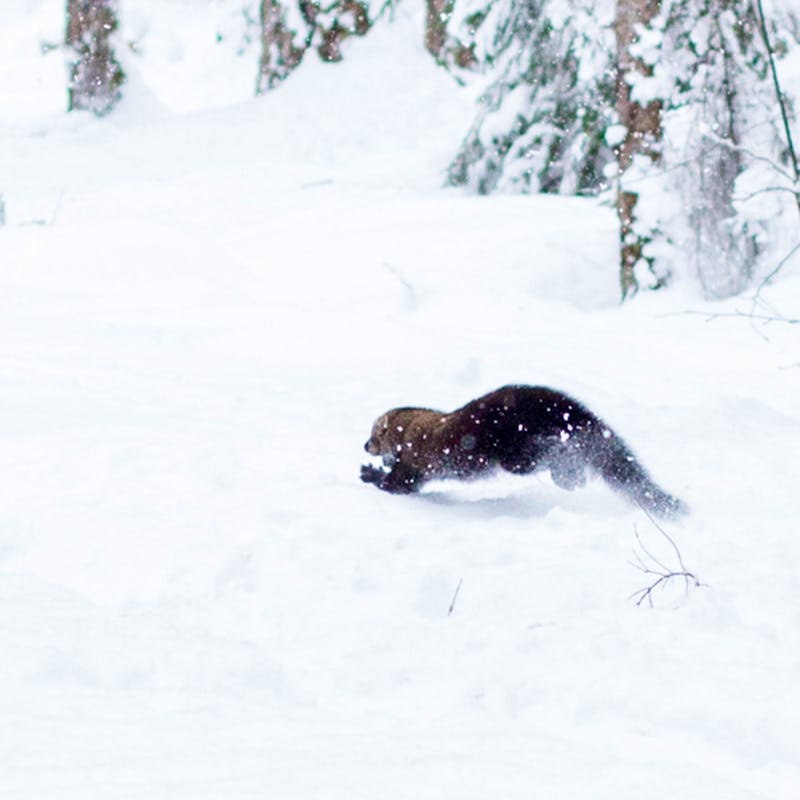BREAKING: The number of endangered Mexican wolves, or lobos, in Arizona and New Mexico increased last year to 58 wolves and six breeding pairs, up from 50 wolves and two breeding pairs in 2010, the U.S. Fish and Wildlife Service announced today.
The small boost is big news around here. Mexican wolves are the most endangered subspecies of gray wolf in North America.
To get a better idea of what this means for the lobo’s recovery, I sat down for an in-depth Q&A with Defenders’ Southwest program director, Eva Sargent.
If you just want the highlights, check out our press release.
Q: So what exactly is the annual population count?
Eva: In January each year, the U.S. Fish and Wildlife Service (FWS) takes to the skies over the Blue Range Wolf Recovery Area spanning more than four million acres in Arizona and New Mexico to count how many wolves are living in the wild. They use an airplane to locate signals from the wolves with telemetry collars, and then radio in a helicopter to take a closer look. The helicopter crew’s job is to count all the wolves found near the collaRed Wolf. The airplane and helicopter also survey areas without collaRed Wolves, searching for lobos that could have set out to claim new territory, find a mate or start a pack. Wildlife officials use this information along with wolves tallied during ground surveys in November and December to come up with a final count.
Q: Why do you think lobo numbers are on the rise?
Eva: We are seeing the pay off of years of hard work by Defenders and others. In 2009, Defenders settled an important court case with the Fish and Wildlife Service that ended the notorious “three strikes” policy, which removed far too many wolves from the wild. Even genetically important wolves, and those with dependent pups, were removed. Under those conditions, it was difficult for the population to grow. Since the settlement, only one wolf has been removed. Fewer removals and more Wolf Coexistence Partnerships have helped Mexican wolves survive. Our coexistence program works directly with ranchers to lower conflict between livestock and lobos. We do things like help ranchers hire more cowboys to watch over cattle, fund special fencing or fladry (flags that wolves avoid), move livestock away from den sites – techniques that are proven to work. We’ve had growing interest from ranchers in the last few years, and the FWS, Arizona Game and Fish Department and others are placing a greater emphasis on coexistence projects.
Q: Is this increase typical or should lobos be doing better?
Eva: We expected to have 100 wolves and 18 breeding pairs by 2006. Instead, due to excessive removals and ongoing poaching by wolf-haters, the population has never climbed above 59 and stagnated for many years around 50. Wolves are resilient. Given enough game and a chance to find a mate, they will expand into good habitat and the population will grow until it reaches a healthy balance with available prey. The most important thing that we can do to help out now is to release more wolves. There are wolves waiting right now, eligible for release in both Arizona and New Mexico, and the FWS needs to get on the ball and let them go. Some of these wolves have even been specially conditioned to avoid cattle, and we need to get them out there and see if this conditioning method makes a difference. In addition to releasing more wolves, the FWS needs to change its outdated policy that doesn’t allow wolves direct from captivity to be released in New Mexico. The service has been sitting on the paperwork for this policy change for years.
Q: What are some challenges to recovery?
Eva: The challenges are almost all political or social. We have Congressman Pearce in New Mexico repeatedly trying to defund the program, and we have a lack of resolve to release more wolves. We are also waiting for a new recovery plan, although good progress is being made…
The first step to overcoming some of these obstacles is to take a rigorous scientific look at what Mexican wolves need to survive into the future. How many wolves are needed? How many different populations? How will the populations be connected, and where are the best places for wolves–the places with enough prey and not too many roads or too many people?
Q: What more needs to be done to help bring lobos back from the brink?
Eva: While all of the above is being figured out, we will continue to build tolerance and coexistence. We also need more wolves to be released. This is urgent. Our one small population is extremely vulnerable to disasters like the Wallow Fire, to inbreeding, to slipping back toward extinction.






